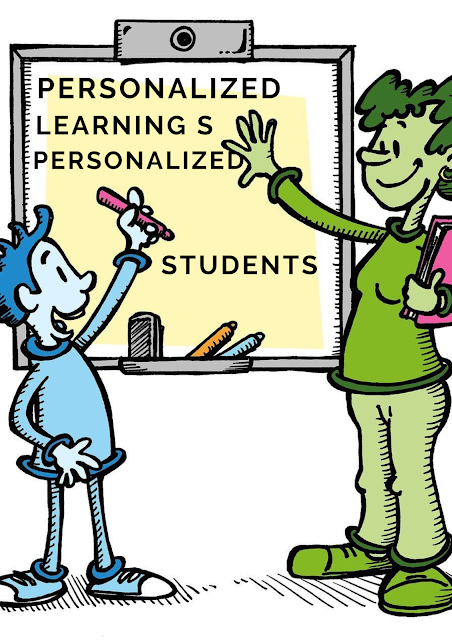Personalized Learning Strategies for Students
In education, one-size-fits-all approaches rarely yield optimal results. Each student comes with unique abilities, challenges, and learning styles, making it essential for teachers to implement strategies that cater to individual needs. By fostering personalized learning environments, teachers can help students unlock their potential and achieve academic success.
Understanding Individual Learning Needs
Every student learns differently due to variations in cognitive abilities, prior knowledge, emotional well-being, and cultural background. These differences necessitate a focus on individualized learning strategies, which can improve both academic outcomes and self-confidence.
Key Factors Influencing Learning Needs:
Learning Styles
- Visual, auditory, kinesthetic, and reading/writing preferences shape how students absorb and retain information.
- Evidence suggests that while learning styles should not dictate teaching methods entirely, aligning instruction with students' preferences can enhance engagement.
Cognitive Abilities
- Variations in memory, attention, and processing speed affect learning efficiency.
- Cognitive assessments can help identify strengths and weaknesses, allowing targeted interventions.
Emotional and Social Factors
- Stress, anxiety, and social dynamics significantly impact a student's ability to learn.
Cultural and Linguistic Background
- Multilingual students or those from diverse cultural backgrounds may require strategies that bridge language barriers and cultural gaps.
Effective Strategies for Teachers
1. Conducting Assessments to Identify Needs
Teachers can begin by understanding each student’s strengths and areas for growth.
- Diagnostic Tools: Pre-assessments, surveys, and standardized tests can help identify knowledge gaps.
- Informal Observations: Watching how students interact with materials and peers provides insight into their learning preferences.
Scientific Evidence: Research from the Journal of Educational Psychology highlights that diagnostic assessments are effective in tailoring instruction to individual needs, improving overall performance.
2. Incorporating Differentiated Instruction
Differentiated instruction involves adapting content, process, product, or learning environment based on individual needs.
- Content: Provide materials at varying levels of complexity.
- Process: Use multiple instructional methods, such as group discussions, hands-on activities, and multimedia presentations.
- Product: Allow students to demonstrate understanding in diverse ways, such as essays, presentations, or creative projects.
Example: A student struggling with reading comprehension might benefit from graphic organizers, while a more advanced learner could explore independent research.
3. Teaching Metacognitive Strategies
Metacognition, or "pondering reasoning," engages understudies to screen and control their ways of learning.
- Self-Reflection: Encourage students to evaluate what they know and what they need to learn.
- Goal Setting: Help students set realistic, measurable learning goals.
- Self-Regulation: Teach techniques like time management and prioritization.
Scientific Evidence: A study in Educational Research Review found that metacognitive training significantly improves problem-solving skills and academic performance across various age groups.
4. Promoting Active Learning
Active learning engages students directly in the process of constructing knowledge.
- Interactive Activities: Incorporate debates, role-playing, and peer teaching.
- Inquiry-Based Learning: Encourage students to ask questions, conduct research, and explore topics of interest.
- Feedback Loops: Provide immediate, constructive feedback to reinforce learning.
Example: A science teacher could have students conduct experiments and discuss their findings rather than passively listening to lectures.
5. Utilizing Technology and Adaptive Learning Tools
Digital platforms can customize learning experiences based on student performance and preferences.
- Learning Management Systems (LMS): Tools like Google Classroom and Canvas enable personalized content delivery.
- Adaptive Software: Programs like Khan Academy or IXL adjust difficulty levels in real-time.
Scientific Evidence: Research from Computers & Education demonstrates that technology-enhanced learning increases engagement and supports individualized pacing.
6. Encouraging Collaboration and Peer Support
Group work and peer mentoring can address individual needs by leveraging the strengths of the group.
- Peer Teaching: Students explain concepts to each other, reinforcing their understanding.
- Collaborative Projects: Diverse groups bring varied perspectives, enriching the learning experience.
Example: Pairing a student with strong analytical skills with one who excels in creativity can produce a balanced, effective team.
7. Fostering a Growth Mindset
A growth mindset, the belief that abilities can be developed through effort, motivates students to embrace challenges and persist through difficulties.
- Encouragement: Praise effort rather than innate ability.
- Resilience Training: Teach students to view setbacks as opportunities for growth.
Scientific Evidence: Carol Dweck’s research on growth mindset highlights its positive impact on academic achievement and resilience.
8. Building Strong Teacher-Student Relationships
Understanding students’ personal and academic contexts allows teachers to offer tailored support.
- Open Communication: Regular check-ins help address concerns and celebrate progress.
- Empathy and Patience: A supportive environment fosters trust and openness.
Example: A teacher noticing a student struggling with confidence can provide extra encouragement and resources to rebuild self-esteem.
Challenges in Implementing Individualized Learning Strategies
While tailoring strategies to individual needs is beneficial, it is not without challenges:
- Time Constraints: Large class sizes make it difficult to provide one-on-one attention.
- Resource Limitations: Schools may lack funding for adaptive tools or additional support staff.
- Teacher Training: Not all educators are equipped with the skills to implement personalized learning effectively.
Solution: Professional development programs and collaborative teaching models can mitigate these challenges.
Conclusion
Helping students develop effective learning strategies tailored to their individual needs is a multifaceted process requiring assessment, adaptability, and empathy. Teachers play a pivotal role in fostering an environment where each student feels supported and empowered to succeed.
By employing evidence-based practices such as differentiated instruction, metacognitive training, and technology integration, educators can address diverse learning needs and unlock every student's potential. The ultimate goal is not only academic achievement but also lifelong learning skills that prepare students for success beyond the classroom.
References
- Dweck, C. S. (2006). Mindset: The New Psychology of Success. Random House.
- Hattie, J., & Timperley, H. (2007). The Power of Feedback. Review of Educational Research, 77(1), 81-112.
- Mayer, R. E. (2004). Should There Be a Three-Strikes Rule Against Pure Discovery Learning? American Psychologist, 59(1), 14–19.
- Shute, V. J. (2008). Focus on Formative Feedback. Review of Educational Research, 78(1), 153–189.
- Zimmerman, B. J. (2002). Becoming a Self-Regulated Learner: An Overview. Theory into Practice, 41(2), 64–70.









0 Comments